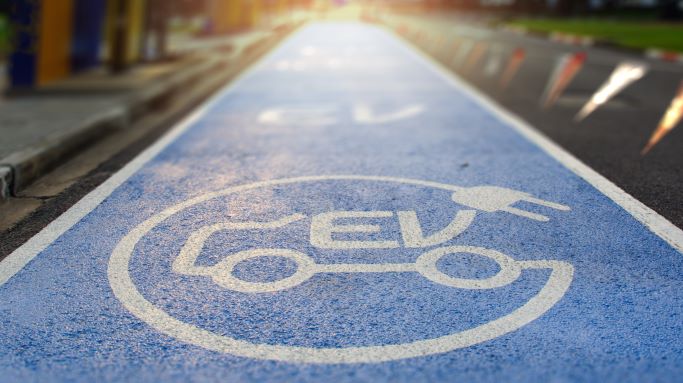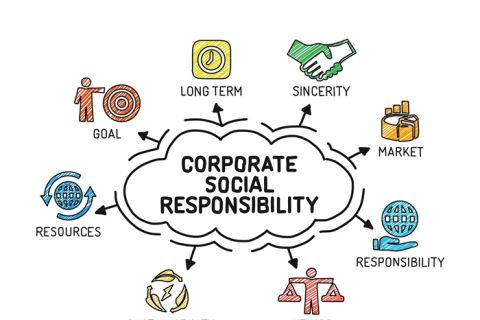
Forecasts project that there will be around 100 million electric vehicles on the roads in the next few decades. With that additional electricity demand, it’s important to consider how we are going to be able to charge electric vehicles.
Dr Zhou from Singapore Management University and colleagues propose an innovative business model for utility firms to meet the stress of electric vehicles on the energy grid, and keep the world moving.
Read the original article: http://doi.org/10.1287/msom.2021.1019
Transcript:
Hello and welcome to ResearchPod. Thank you for listening and joining us today.
In this episode we are exploring research conducted by Yangfang (Helen) Zhou from Singapore Management University, co-authored with Owen Wu from Indiana University, and Safak Yucel from Georgetown University. Their research is related to smart charging of electric vehicles, as they propose an innovative business model for utility firms.
Electric vehicles are on a mission to transform mobility by providing an eco-friendly alternative to traditionally fueled vehicles. Many forecasts project that there will be around 100 million EVs roaming the roads in the next few decades. Let’s do a quick back-of-the-envelope calculation: if each EV has a capacity of 100 kWh, then 100 million EVs will require 10,000 GWh to charge. This much electricity is equivalent to that generated by a nuclear power plant with a 1 GW capacity running nonstop for 1 year, so it is clearly important to consider how we are going to be able to charge electric vehicles.
The transformation will be even more evident in smart cities, necessitating significant investment in charging stations. Across the US, Europe, and China, experts predict that over $50 billion will need to be invested into building charging stations.
As electricity demand varies throughout the day, the cost of electricity generation varies significantly, as do the associated greenhouse emissions. At the moment, whenever an electric vehicle is plugged into a charging station, its battery is charged as quickly as possible. This is because the current prices of electric vehicle charging is mostly based on kilowatt Hours charged – that is, the amount of electricity charged to the battery. As a result, drivers have no incentive to delay charging their vehicles, that is to say, drivers would always choose to charge as soon as possible.
However, this practice may result in unnecessarily high costs and emissions. This is because when a vehicle is plugged in, the electricity demand may be already extremely high – for example, on a hot summer day with a sudden dip in the solar power generation, so the additional electricity demand has to be satisfied by peak power plants, which are usually more expensive, and generate more greenhouse emissions per unit of electricity generated.
But not all users need an ultra-fast charge, and may not need to use their car until much later. For instance, some may be working nearby and not need their cars until several hours later. In this case, it could be possible to reduce both the cost of electricity generation and any emissions by smart charging, that is to say, delaying charging these electric batteries to a time when the cost of electricity is lower.
This is what the research team examine, as a possible innovative business model for utility firms.
However, utility firms do not know which drivers can and cannot delay their charging, as this is the drivers’ private information. So, utility firms could potentially use charging prices to encourage drivers who can delay charging to pick their electric vehicles later.
Wu, Yucel, and Zhou use a mechanism design approach to design a ‘price menu’ which would incentivise drivers. In particular, the price menu would specify a certain price for a given duration to charge the vehicle. For instance during the afternoon, the price for charging is 8 dollars, if you need your vehicle in three hours; the price will drop to 6 dollars if you don’t need your vehicle for four hours; and it further drops to 5 dollars if you can wait for five hours.
The longer the charging duration, the more flexibility the utility firm has in terms of managing the charging. Therefore, the utility firm can potentially reduce the total charging cost. As a result, the utility firm can pass the cost savings to these drivers who are able to delay charging their vehicles for longer. This is a win for the electric grid, and a win for electric vehicle drivers as well.
In order to exactly compute this price menu, the utility firm has to consider the total cost of charging many electric vehicles, each of which has its own deadline for when they need their vehicle to be charged. In their research, the authors characterise an optimal charging scheme, and then use this result to derive the optimal price menu.
The authors examine this issue from the perspective of utility firms, rather than the usual commercial charging stations which can be seen by the side of city roads. This is because utility firms are in an ideal position to manage charging of electric vehicles. For instance, some utility firms already have plans to invest in their own charging stations, as they are the ones who have to bear the costs of procuring or generating the necessary electricity for charging a growing number of electric vehicles, and they also directly observe the resulting emissions.
The research team then implemented the proposed smart charging mechanism using the electricity price and emissions data from PJM Interconnection, the largest electricity wholesale market in the U.S. They found that, when compared with the current practice of charging the vehicles as quickly as possible, the proposed smart charging mechanism can reduce average generation cost by nearly 20% during a typical summer month. In addition, it can also reduce emissions by approximately 15%.
This then makes smart charging a triple win, as it’s not only a win for the electric grid, and electric vehicle drivers, but also a win for the environment. The authors further show that that cost savings related to smart charging can offset the cost of purchasing additional chargers.
Surprisingly, most of these cost and emission reduction benefits can be achieved by implementing smart charging on only a few peak-demand days when electricity demand is high. During these few peak-demand days, the electricity demand spikes for a few hours, but the marginal electricity generation cost for the highest electricity demand can be more than 20 times the average electricity price, so delaying charging of electric vehicles during these few days can reap most of the benefits of smart charging. This points out to the practical use of this proposed smart charging idea.
The authors find the cost savings and emissions reduction are similar for two types of utility firms: public and private. As both firms have different objectives, it is reasonable to believe that these two types of utility firms may act very differently. In particular, a public utility firm is not for profit, that is, the firm wants to maximise social welfare, which includes both the cost of generation and the drivers’ inconvenience cost of delaying charging. The private utility firm, on the other hand, is a for-profit business, aiming to maximize its own profits, which is revenue minus charging cost. However, the two different objectives do not mean that the pricing decisions of the private utility firms will vary widely from those of the public one. Either public or private, allowing a utility firm to own and operate charging stations can lead to reductions in both costs and emissions.
A final word for all electric vehicle owners: embrace the new EV charging model. Tell your utility firm when you need EVs, and let the utility firms decide when to charge. It’s cheaper for you, for the grid, and cleaner for the environment.
Thanks very much for listening. Don’t forget to check out the links to the original research papers, linked in the notes for this episode, and stay subscribed to ResearchPod for all the latest in research news. See you again soon.
Also published on https://researchpod.org/business/smart-charging-of-electric-vehicles
Podcast is also available on Spotify, Apple iTunes, Google Podcasts, and many more (please use search term “ResearchPod”).
See More News
Want to see more of SMU Research?
Sign up for Research@SMU e-newslettter to know more about our research and research-related events!
If you would like to remove yourself from all our mailing list, please visit https://eservices.smu.edu.sg/internet/DNC/Default.aspx

